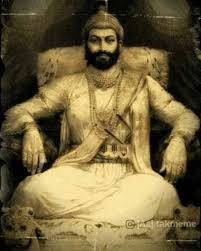Introduction — a plain question, a big mystery
People often ask the simple line: how did Shivaji Maharaj died. This question carries weight. It reaches into 17th century forts, court rooms, and old letters. Shivaji was a founder and a fierce leader. His death changed a kingdom and many lives. In this piece I will walk you through the facts and the debates. I will use old records and modern historian views. I will explain tricky words in simple language. I will try to be fair and clear. You will find clear steps, trustworthy sources, and answers to common questions. By the end, you will understand why the question how did Shivaji Maharaj died still matters today.
Quick facts you should know first
If you want a short answer to how did Shivaji Maharaj died, here are the basic facts. Shivaji died in early April 1680. The place of his death was Raigad Fort. He had been ill before he passed away. After his death, his older son Sambhaji became ruler. A battle inside the palace followed over who would take the throne. Different writers have given different reasons for his end. Some blame natural illness. Some hint at poison. Others suggest rare infections. We will look closely at each claim and the evidence behind it.
When and where he died — the timeline and the spot
Knowing when and where helps answer how did Shivaji Maharaj died. Shivaji passed away in early April 1680. Many sources give the date as April 3, 1680. The location is Raigad Fort. Raigad was his mountain capital in the western Ghats. He had moved there from other forts during his rule. The death happened during the time of Hanuman Jayanti, a Hindu festival. The timing made the event even more moving for people of that age. Official letters from other governments at that time also reported his death soon after it happened.
What was reported about his illness and symptoms
To answer how did Shivaji Maharaj died we must listen to old reports about his sickness. Court chronicles say he had fever for days. Some accounts mention severe stomach trouble and diarrhea. British letters from 1680 used the phrase “bloody flux.” That old phrase refers to serious intestinal disease. A Portuguese report named ulcerous disease or what they called anthrax. Marathi court records like the Sabhasad Bakhar say he suffered fever. These reports use different words. They also come from people with different views. So historians read them together and compare details. That helps build a clearer picture of his final illness.
The main theories about his cause of death
When people ask how did Shivaji Maharaj died, historians give a few main ideas. One idea says he died of ordinary fever, perhaps typhoid or dysentery. Another idea points to anthrax or an ulcer, based on a Portuguese account. A third idea raises the charge of poisoning by court rivals. Each idea has some support. Fever and stomach infection fit many symptoms in the records. The anthrax note is specific but rare. Poisoning is suggested by later stories about palace politics. Still, no single clear proof ties all these ideas together. That is why the debate continues in books and articles today.
Primary sources — which old records tell the story
To study how did Shivaji Maharaj died we turn to primary sources. Primary sources are records made close to the time of the event. For Shivaji, these include Marathi bakhars, Portuguese reports, and letters written by the English and Dutch. Sabhasad Bakhar is a near-contemporary Marathi chronicle. It was written by a courtier who knew Shivaji’s circle. Foreign letters recorded what their trading posts heard. Each source shows a part of the truth. But each source also has limits. Court papers may protect the king’s image. Foreign papers may misinterpret local words. Historians compare these sources to draw a careful conclusion.
Politics, palace drama, and the poisoning story
The question how did Shivaji Maharaj died often turns into gossip about palace plots. After Shivaji became ill, a power struggle rose between his sons and noble factions. Soyarabai, one of his wives, favored her young son Rajaram for the throne. Sambhaji, the elder son, had a tense past with his father. Such rivalry fed the idea that someone might poison Shivaji. Some later writers pushed this idea strongly. But most modern historians treat poisoning claims with caution. The claim needs strong proof. We simply do not have a clear, direct proof that poisoning happened. Scholars keep the possibility as a theory, not a proven fact.
How doctors today try to explain the illness
Modern medicine can help read old symptoms. When people ask how did Shivaji Maharaj died, doctors list possibilities like typhoid, dysentery, or septicemia. These illnesses cause fever and severe gut trouble. Anthrax is another disease mentioned in old papers. Anthrax is rare and dangerous. But diagnosing the cause now is hard. We lack medical records, lab tests, or preserved tissue. Doctors must rely on written descriptions. That method is useful but not perfect. So modern experts give likely answers, not full proof. The safest view is that Shivaji died from a severe infectious illness, probably of the gut or blood.
The immediate aftermath — rituals and mourning
When we ask how did Shivaji Maharaj died, we also ask what happened next. His death led to intense mourning in the capital. There were public ceremonies and final rites. One of his wives, Putalabai, is recorded to have committed sati at his funeral. Others remained to raise children and keep the household. The public showed grief across the Maratha lands. News of the death spread quickly through trading posts and foreign outposts. This quick spread of news explains why British and Portuguese letters mention the death. It also shows how central Shivaji was to life in the region. The mourning helped unite some people, yet it also opened the door to political fights.
How his death shaped the Maratha future
Asking how did Shivaji Maharaj died often leads to the topic of succession. After his death, Sambhaji became the ruler. His reign brought new challenges with the Mughal empire. The Maratha state changed as leaders adjusted to a new ruler. The death of a founder like Shivaji created a test for the whole system. Some ministers tried to push other claimants forward. Sambhaji tightened control and fought many wars. This chain of events shows that the death was more than a private loss. It was a turning point in regional history.
Myths, legends, and why confusion remains
People often search how did Shivaji Maharaj died and meet many myths. Myths grow for two reasons. One, records are short and sometimes unclear. Two, storytellers add drama to fill gaps. Poisoning stories, secret plots, and miracle tales all appear over time. Folk songs and plays keep these tales alive. Historians must separate art from fact. They check dates, look at who wrote what, and ask why a story began. Some myths tell us more about the people who told them than about Shivaji himself. My job is to show how to read these tales with smart questions and calm care.
What most historians agree on today
If you want a balanced answer to how did Shivaji Maharaj died, listen to the majority of scholars. Most accept that Shivaji died after a short but serious illness in April 1680. They accept Raigad as the place of death. Beyond that, most historians are cautious about a single cause. They find fever and intestinal infection likely. They treat poisoning claims as unproven. They note the Portuguese anthrax report but view it as one odd record. Historians value earlier, local records like Sabhasad Bakhar. When all sources are weighed, the safest conclusion is natural disease, with political rivalries amplifying rumor.
Lessons from Shivaji’s death for leaders today
The story of how did Shivaji Maharaj died can teach modern leaders a few lessons. First, strong institutions help a state survive a leader’s death. Shivaji set up councils and officers to help rule. Those structures mattered after he died. Second, clear succession plans reduce chaos. Shivaji’s family had tensions, which made succession messy. Third, honest records and transparent information reduce wild rumors. When facts are clear, rumor fades. These are simple lessons. They matter not only for kings and queens. They apply to modern organizations, too.
FAQs
1. What exactly happened when Shivaji fell ill?
He became ill in late March 1680 with fever and severe stomach problems. Despite care, his health worsened, and he passed away in early April.
2. Was Shivaji poisoned, as some stories say?
Poisoning is a theory, but strong proof is missing. Most reliable records do not confirm it.
3. Where and when did he die exactly?
He died on April 3, 1680, at Raigad Fort, his capital in his last years.
4. Did his death cause the Maratha kingdom to weaken?
Yes and no. His death created chaos and power struggles, but the kingdom survived and fought on under Sambhaji.
5. Which old sources say anthrax or ulcer caused the death?
A Portuguese note mentioned an ulcerous disease (possibly anthrax). Local records instead mention fever and stomach illness.
6. How reliable are stories that claim Soyarabai poisoned him?
These stories come from palace rivalry and later politics. Historians treat them as rumor, not proven fact.
Conclusion — what to take away and what you can do next
If you searched how did Shivaji Maharaj died you now have a clear map. Shivaji died at Raigad in early April 1680 after a serious illness. Records point toward fever and gut problems, with anthrax and poisoning appearing as debated alternatives. Historians weigh many sources and prefer cautious answers. The real lesson is how to read history. Look for near-time records. Compare independent reports. Question dramatic claims without proof. If you want to learn more, read the Sabhasad Bakhar and other trusted works. You can also visit Raigad and see the place yourself. If you found this helpful, share it with others. Your curiosity helps keep history alive.









